BANLIEUE(S) :
A trip through the RER B and the ambiguous Parisian “forgotten” lands.
Concepts of Domecticity
Ioanna Piniara AA School of Architecture

A trip through the RER B and the ambiguous Parisian “forgotten” lands.

1- The Grands ensembles, the land of the exiled : ‘‘This train will stop at: Villepinte, Aulnay, Blanc Mesnil, Drancy, AubervilliersLa Courneuve ...’’.
a) The 3000
b) Train of thoughts
c) Drancy
d) Aubervilliers La Courneuve
2- Towards Paris, a parenthesis on spatial paradoxes. The ‘Peripheral no man’s land’.
a) Arriving to paris
b) The Train as a place?
c) The train as a ‘Dérive’
3- Where the stops’ names are longer and where the grass is greener.
a) The ‘Other Banlieue’
b) Arceuil, Bourg La reine Terminus
 Credits to Alice Diop, «Nous», 2020
Credits to Alice Diop, «Nous», 2020
 Map of the RER B line, Paris and its Suburbs via Paris City Vision
Map of the RER B line, Paris and its Suburbs via Paris City Vision
Not so long ago, in a quite sporadic conversation with a family member, I learned that a large portion of the Parisian suburbs were covered by slums during the 1960s and 70s. Having been associated with slums like Rio de Janeiro or Delhi, the image of makeshift accommodation cluttered around France’s capital was difficult for me to picture.
After some thought, this situation made a lot of sense to me as inequality knows no borders and the same economic paradoxes are found at every latitude, with Paris being no exception. Only, I was born fifty years after more than a million people had been displaced and the last slum was replaced with what we know today as “the grands ensembles”; large estates composed of towers that nowadays represent a very stereotypical image of the housing developments around Parisian outskirts. With time, these estates became the face of what we call the Banlieue1 . These towers are far from being the only cliché that the Banlieue evokes to French people and they represent a mere portion of what these urban spaces really are. The Banlieue is generally homogenized in discourse, the term has a connotation of negative associations linked to the “block estates” or “Cités”2 -due to police repression and other factors of tension among them.
The term Banlieue is being misused or more particularly misaddressed. This paradox of homogenization inevitably means that the Banlieue is neither singular nor a definition of a typical organization of space but rather a very complex and ambiguous spatial archipelago. This partition of the Banlieue(s) is not always visible, and is in fact fluid. No clear boundary determines a real separation between the middle class pavillionaire3 residential areas and the council flats. The Banlieues are the fruit of successive bursts of urbanization and spatial production, it is a continuous palimpsest dictated by gentrification, history and immigration. Finding different ways to capture the Banlieues is understanding the nature of the urban spaces, their clichés and thus the way they shape the suburban everyday life.
One of them is fifty kilometers long, crosses Paris from south to north and is commonly known as the RER B4 . Through a thirtyeight-stop trip across the Parisian forgotten landscapes, the come and go of the RER B passengers tells us a lot about the Banlieues invisible thresholds. Spatial organization can dictate movement and be understood through the relative freedom of transportation it allows, which my essay will try to study through a trip from Roissy Charles de Gaule airport to Saint Remy les Chevreuses. As Francois Maspero said “a month in the RER can teach you more about ‘la France profonde’5 than a year in Provence”1 , revealing the beauty and ambiguity of the Parisian suburban space and history.
1)The Grands ensembles, the land of the exiled : “This train will stop at: Villepinte, Aulnay, Blanc Mesnil, Drancy and Aubervilliers-La Courneuve”.
After departing from the Charles de Gaule airport train station, there is nothing. The previously green squares of ploughed earth are now all replaced by concrete, motorways and giant warehouses. Between Roissy, Garronor and the Paris peripheral boulevard the landscapes are «non-lieux» - non-places2 . It is one of these places where a stranger will get off the train at an improbable stop, then after walking a consequent amount of time on the side of the road will disappear at a crossroad of to even more improbable places, where are they going?
After a couple minutes on the train the infamous block estates make their appearance, the long sequences of five floor buildings (because a sixth floor would require elevators) are a good example of the absurdity of the architecture of the grands ensembles. The first wellknown estate on our route is called La Rose des Vents6 or more commonly known as the 3000, referring to the three thousand apartments of which it is composed. Or maybe the thousands of origins and stories left behind and the number of kilometers that separate some of its inhabitants from the places they used to call home. What is sure in that case is that more often than not stories ended somewhere to start somewhere else: “My arrival? There is not much to say. I arrived here, I knew a guy. A friend who had come to France before me (...) I started working at the factory in 1960 until 1980. My kids were born here, I bought a house -And that’s positive to you? -Absolutely.”3 This conversation between Alice Diop and her dad in her last movie “We” accurately depicts the bitter-sweet identity of some of the Banlieues families and their stories. This phenomenon caused a certain identarian bipolarity to a lot of Ile de France’s 7 youth, not really knowing what to answer to the question of: “Where are you from?”, Senegal, Algeria, Aubervilliers? This cultural metissage8 (mixing) is the beauty and pride of the Banlieues in all generations. A woman in Maspero’s book compares her eyes to the photograph taking a picture of her “You have the same eye, blue eyes, faraway eyes.”4 , This distance, this attachment to the “faraway” deepens the gap between Paris and part of its banlieue. “In the 3000, a large part of the population don’t have a vote, because they don’t have French citizenship. But another part is making itself heard.” Or
2 Marc Augé. 1995. Non-Places, An introduction to supermodernity. Verso Books.
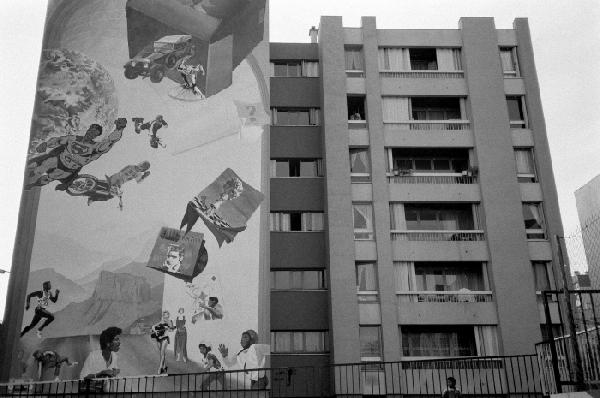
3 Alice Diop. 2020. Nous. Athénaïse.
4 François Maspero. 1994. Roissy Express. Verso Books.

maybe they need to find a way to make themselves heard.
After passing Villepinte and the 3000, the landscape is easy to comprehend, once we cross the A1 motorway, all is “hell, hell, hell”5. Now Graffiti’s decorate the landscape, they’re evocative to most French people. In reality, these places we call “Cités” have a very strong influence on the center of Paris and the rest of France in general through their reputation of course but mostly for their musical subcultures and overall visual language, the one of the Parisian suburban blocks.
A certain democratization of this suburban culture has happened for decades now at all levels of influence, This phenomenon contributes in a way to the so-called “collective homogenization” of the Banlieue’s perception, image and reputation -as it is without a doubt the loudest and most cliché representation of it nowadays. Most people are familiar with Matthieu Kassovitz’s «La Haine»6 where three youngsters spend aimless days in a sterile Parisian banlieue until they eventually get into a confrontation with the police. Most French kids are also familiar with the stereotypical and controversial images of rap music video shot in the blocks.
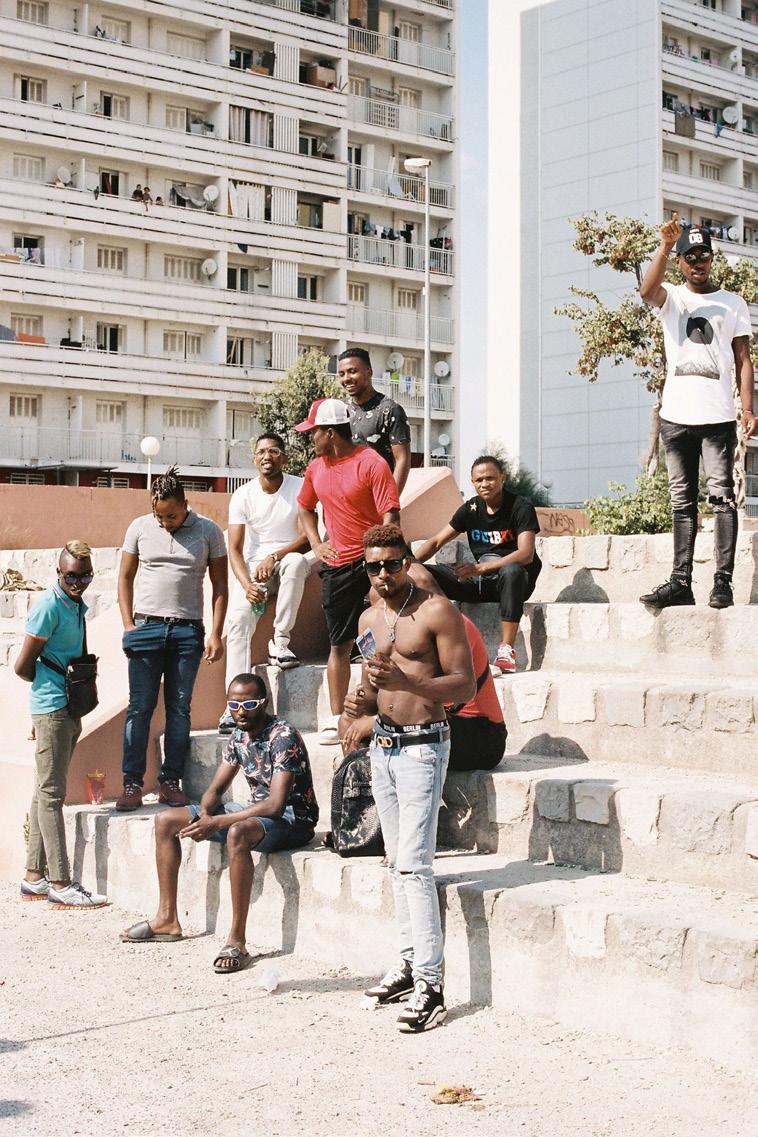
An accurate example of this ghettoization of poorer social classes in the Banlieue is Drancy, a few stops away from stop right after Blanc-Mesnil. During the second world war, Drancy or Drancy-la-Juive9 at the time, served as a «camp» shaped like a suburban neighborhood. Ironically, some of the “cités” needed very few modifications from their original state to be transformed into proper ghettos by the Germans in 1941 and after that, very few things had to be taken away to bring them back to being HLM (low income housing). Sadly, this place didn’t change much. “Everything is dreary because everything here has always been dreary7” there are still the same walls and the same dire paved paths, these estates don’t incarnate what they were long ago but their indefinable physical characteristics haven’t really changed. “Here time has covered nothing”8 .
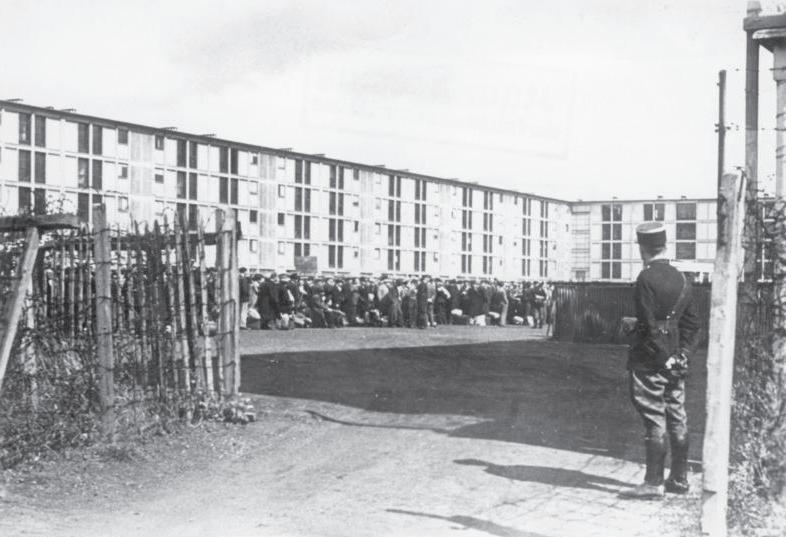
5 François Maspero. 1994. Roissy Express. Verso Books. 6 Mathieu Kassovitz, La Haine, DVD (Criterion Collection, 2007).
7 Jean-Pierre Lefebvre. 1989. Banlieue 93. Messidor.
8

Our last stop before reaching the first Parisian ramparts is called Aubervilliers, it is attached to Paris and is getting closer and closer to it or maybe Paris is actually getting closer to Aubervilliers. In fact it might look similar to a lot of the poorer areas of Paris and yet: “When I was a kid, real gang members were formed from the youth of the 4000”9 This name, “the 4000” resonates the same to a lot of Parisians, the name itself is imposing and intimidating compared to the previously mentioned “800 or “3000”, it overlooks everything and sounds almost too sub-divided, too multiple for the amount of space and people living in it. It is “A young monster which has grown too fast”10 . The sense of belonging in Aubervillier is very strong it is a sort of enclave in the Parisian banlieue, it is a sort of nationality of its own, a home born out of what Charles de Gaule would call “un grand bordel” (a large mess). This estate is considered to be the most violent estate in French Banlieue and its reputation follow it and its inhabitants. How many times have we seen reporters on the French television filming Police raids in these blocks? It is the land of the economically exiled population of Ile de France. We don’t exactly know how many people live in the 4000: twenty thousand? Twenty-five thousand? Nowadays everyone seems to point their finger at whom is to blame for this social and economical enclosure around Aubervilliers-la Courneuve “everything was built not just cynically but foolishly too, in a kind of stupid adherence to a ultra-rationalist discourse used by Le Corbusier”11 . His ‘humanist’ plan for a standard-sized living unit was seen by men like Pierre Laval10 as a sort of Miracle solution for the “problem of the Banlieues” but is nowadays criticized, frowned
9 François Maspero. 1994. Roissy Express. Verso Books.
10 François Maspero. 1994. Roissy Express. Verso Books.
11 François Maspero. 1994. Roissy Express. Verso Books.
upon and seen as a softcore economic, psychological and social imprisonment -often described and pictured in French hip-hop music. Maybe the origin of the divorce between the Paris intra-muros and some of its suburbs.
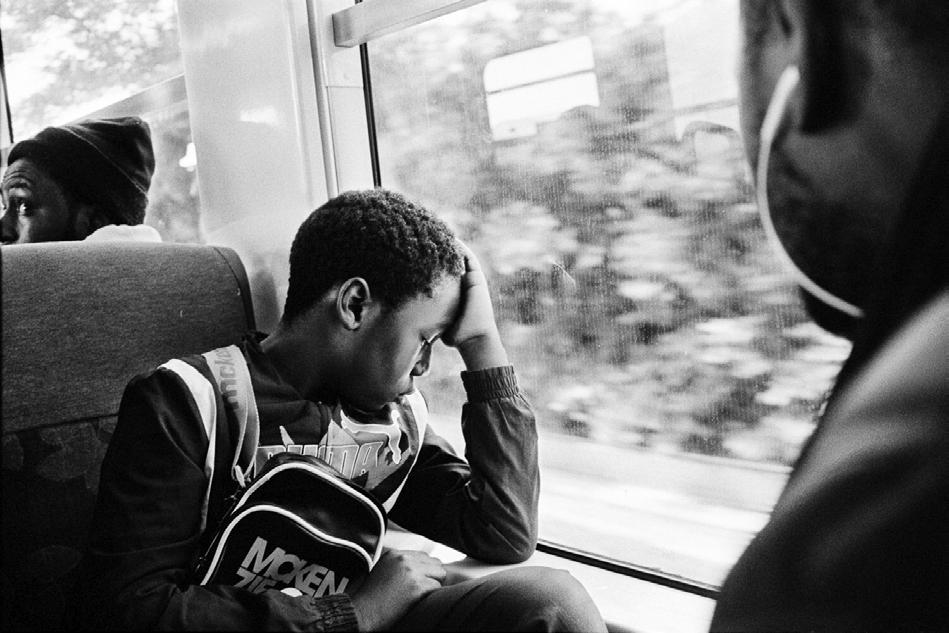
In the middle of the line, the RER B crosses the city of Paris and stops at only a couple of places. But what is most interesting when arriving to the “City of light” is the space right before the gates of the city, what we commonly refer as “the périph;”11 a boulevard resembling rather a large highway circumscribing around Paris, not without reminding us of a modern representation of a rampart. What struck me the most when thinking about this place is how spatial organization and layering dictate the nature of the space and our perception of it. The landscape around Paris in a way confirms our expectations of a space which has a very complex urban infrastructure. The layering of multiple rhythms of transportation seen on the same “frame” (landscape or décor), insinuates multiple dimensions of perception of the same place and even of Paris on the Banlieue:
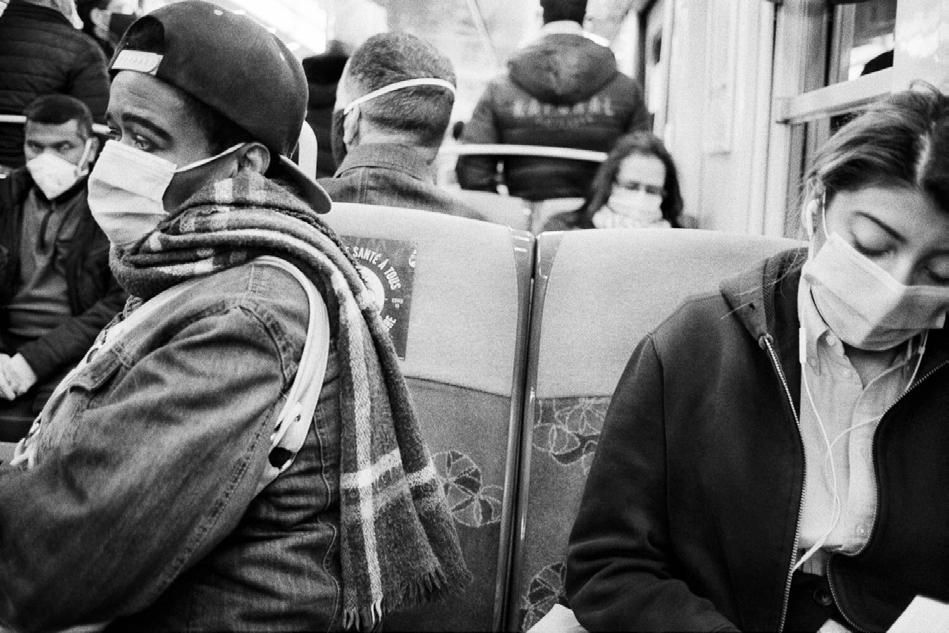
Driving through this threshold by car on the peripheral highway is a completely different experience than crossing it by train or on foot (for the bravest urban adventurers, graffiti artists and homeless people). The space reveals different parts of its nature, where a certain rhythm of transportation will let you see through the windows of some buildings, others will reveal how some people have found shelter under a bridge. This landscape seems to follow the physical rules of temporary space, the atmosphere seems to be different than inside Paris or in the banlieue. It is a transitory space where times goes by at a different pace.
The RER B on the other hand is particularly interesting to study as a space in itself. If the estates have a bad reputation for some people, the trip through these few stops represent just as big of a fright for a lot of Parisians. This statement is particularly important in my discourse as it considers the RER train line as the reflection of landscape it goes through. The come and go of its different passengers reveal to us a spatial analogy of the multiplicity and diversity of
the suburban landscape, in other words the crowd changes in parallel to the landscapes. The ‘Roissy express’ is a metaphor of the complexity of the banlieue and underlines accurately the problem I am trying to underline in this essay.
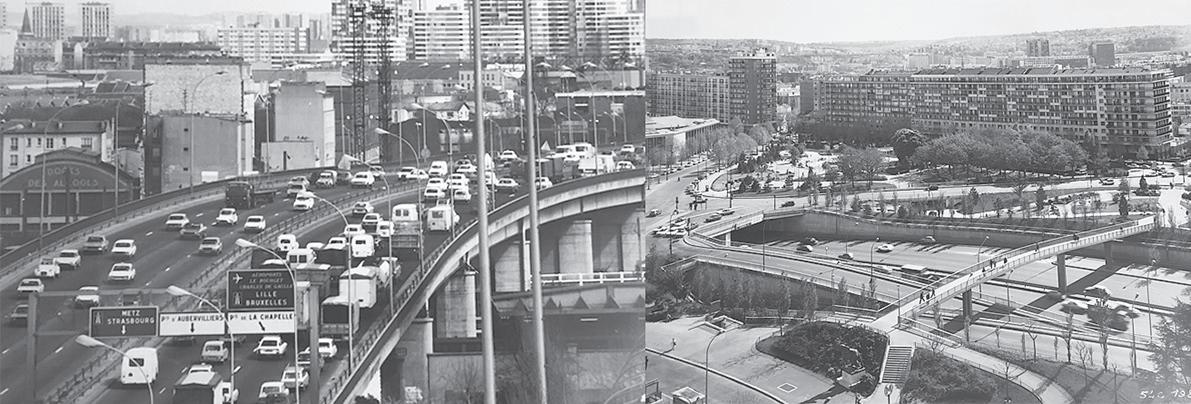
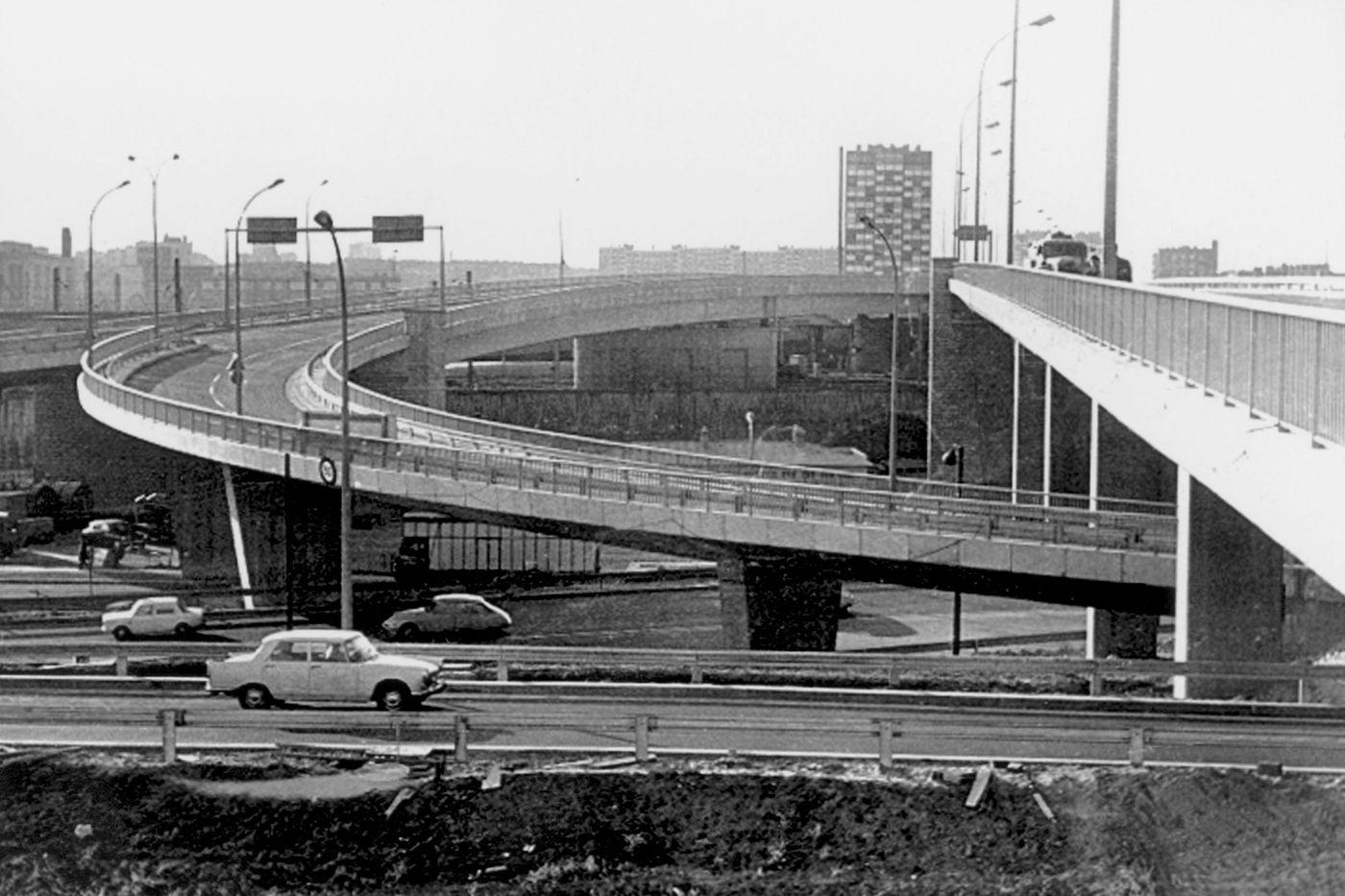
The work of the situationists (and more specifically Guy Debord) is particularly relevant when put in comparison with this train line and its relationship with the ambiguous space of the Parisian periphery. The importance of transition, boundary and threshold are highlighted by the fact that no matter what we are forced to experience, the space is perceived through an imposed never changing succession of stops. Similarly to a theatre play that is being performed in acts with different settings. In the case of the RER, we can choose which story we want to see, we can understand the narratives of various rich and complex lands in our own way through this spatial constraint that is the train. Understanding the train as a space and not as a vehicle is crucial for the interpretation of my method (or derive12 ). In this case Paris is not the destination or a city anymore, it is a threshold, a space between two stops where you are not supposed to stop, a landscape to admire and experience from your seat and which you would try to comprehend from afar.(I will always remain more attentive to the “arrival in Paris” than while actually cruising around the city). Of course, for most people the RER lines serve as a way of commute to central Paris but when focusing on the banlieue and its relationship to this particular trainline, intra muros Paris seems almost insignificant.
3)Where the stop names are longer and where the grass is greener.
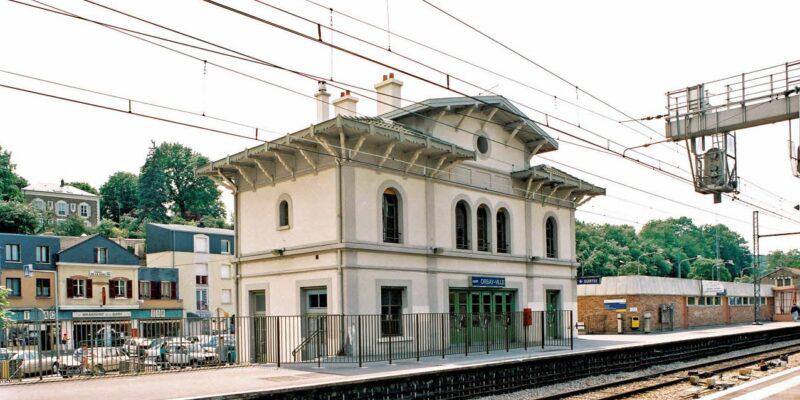
The ‘Other Banlieue’
Moving outside of the city is actually getting inside a way more complex and layered series of space. After the last Parisian stopover in Denfert-Rochereau, we dive back into the depths of the RER B. But the atmosphere has changed now. Here we are in the south, were everything seems to be greener, were the sun has chased away the gray tones of the concrete blocks and now radiates the colorful gardens of the Pavillionaire residences. Here everything seems to take more space, more importance maybe due to the fact that here names, comfort, tradition and even dogs matter more than everywhere else. This mundanity, however hides a controversial past and more often than not takes an also controversial position on the political compass. The posters for municipal elections have shifted colors, from a bright red to a very dark ‘right-wing’ blue, some of them not without reminding us the result of a certain xenophobic impulse.
Arceuil, Bourg La reine

Bourg la reine beats all records of emptiness, in fact the areas of Bourg-la-reine or the Arceuil forest show us the privilege not only of the individual but the spatial. Forests, gardens and flower beds are all part of the landscape that represent an important part of the traditions of a certain social class. Court hunt still exist nowadays and is mainly frowned upon creating a tension between conservatist members of this community and younger generations from outside these counties. A strong sense of separation exists (and can be perceived) in the southern part of the suburbs. Here métissage is not common and was not welcome for a long time.
The idea of separation is also present culturally:
Compared to Aubervilliers-La Courneuve or Garronor, these other banlieues seem richer and smarter culturally. Numerous cultural and scientific research centers can be seen -like the CNRS13 which in the first place would have never been erected in the “ghetto” and in a certain way contribute to a stronger division between the north and the south. A vicious circle that in fact has maybe improved in the past decades with the wonderful addition of the pink Euro Disney tower to create a balance with the brutal roughness of the norther Banlieues landscapes and buildings.
It is today complicated to know what we mean when talking about the Banlieue, this word similarly to the space that it refers to outgrew its definition. Through the essay I have tried to tell the stories of these landscapes and what they represent in Frances modern culture to understand the passenger of this train line. Analyzing and re-contextualizing the charachters of the Parisian banlieue is participating in the act of demystification of these places -most particularly the destruction of the clichés and other stereotypes that the term evokes.
Here we are at Saint-Remy les Chevreuse at the terminus of our train, “tout le monde descend”14 . It is the end of my journey. Here a valley separates the terminus of the line from the “diagonal of the void”15 another mystical expression full of ready-made ideas used to describe the diagonal that crosses France from north east to south west. A larger version of my voyage or experience across the Parisian region that probably holds an infinity of places and faces to discover.
What I want to call the rules of my game or what resembles more a situationist derive consists of the use of the train as a constraint or instrument of movement to better analyze my psycho geographical study. The trip comes to an end and my research has not given clear response, just hundreds of other questions that show the exact purpose of my method. The complexity and ambiguity of the Banlieue seems even more complex and ambiguous to me and in a way attests to my statement and intention of showing the Parisian suburbs as a territorial question mark that fascinates people of every generation.
Next time, when entering the RER B to leave Paris, I will never take my eyes off the landscape. I will also never stop imagining the destination of these people getting off at improbable stations and disappearing at improbable crossroads.
1 The outlying residential area of a French city
2 Colloquial term designing large Housing estates often in suburban locations
3 Commonly used to describe private housing estates usually used ti describe middle to high class neighbourhoods
4 A regional train transport system connecting the center to its surrounding suburbs
5 A phrase that denotes the existence of «deep» and profoundly «French» aspects of the culture of French provincial towns, of French village life and rural agricultural culture, which escape the «dominant ideologies»
6 Literally ‘Wind Rose’
7 The compact region immediately surrounding Paris. As such, the region includes all of the metropolis, from the capital itself through the inner banlieue
8 Common expression used to describe a certain miscegenation of race and overall interbreeding of cultures
9 Literally ‘Drancy -the- Jewish’ referring to a composed name structure of appellation common in France.
10 Pierre Jean Marie Laval was a French politician. During the Third Republic, he served as Prime Minister of France from 27 January 1931 to 20 February 1932
11 The Boulevard Périphérique often called the Périph’, is a controlled-access dual-carriageway ring road in Paris, France. With a few exceptions it is situated along Paris’s administrative limit.
12 The dérive ( Literraly «drift») is a revolutionary strategy originally put forward in the «Theory of the Dérive» by Guy Debord, a member at the time of the Letteriste International. Debord defines the dérive as «a mode of experimental behaviour linked to the conditions of urban society: a technique of rapid passage through varied ambiances. It is an unplanned journey through a landscape, usually urban, in which participants drop their everyday relations and «let themselves be drawn by the attractions of the terrain and the encounters they find there”.
13 The French National Centre for Scientific Research
14 ‘everyone gets off’
15 The diagonal void is the imaginary line linking the North-East to the South-West of France and crossing the regions with the country’s lowest population density.
1 François Maspero. 1994. Roissy Express. Verso Books.
2 Jean-Francois Augoyard. 2007. Step by Step. University of Minesota Press.
3 Jean-Pierre Lefebvre. 1989. Banlieue 93. Messidor.
4 1980, La vie dans un grand ensemble : Étude de l’habitat au Puits- la-Marlière en banlieue nord de Paris--A study of housing at Le Puitsla- Marlière, north of Paris, Shankland, Cox and Associates.
5 Alice Diop. 2020. Nous. Athenaise
6 Marc Augé. 1995. Non-Places, An introduction to supermodernity. Verso Books.
7 Mathieu Kassovitz, La Haine, DVD (Criterion Collection, 2007).
8 Yamina Benguigui, dir., 9.3 memory of a territory, DVD (Les Films d’Ici, 2008).
9 Ballandras Guillaume. 2016, Diagonale du vide. Visions du réel